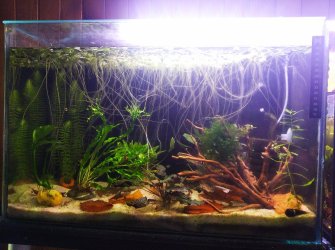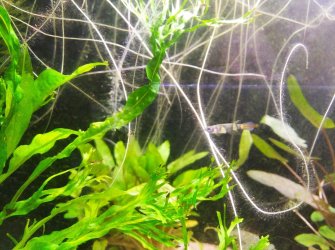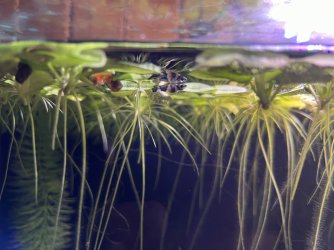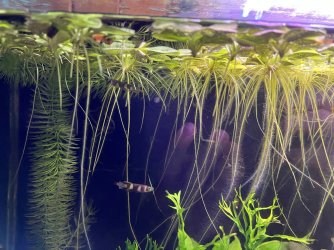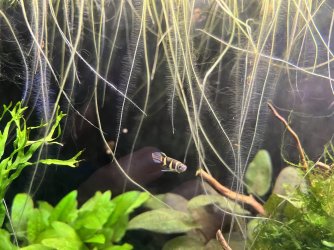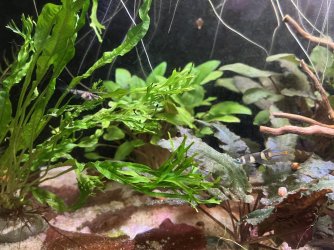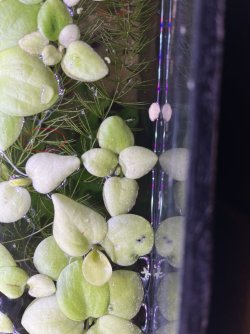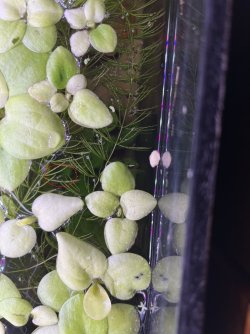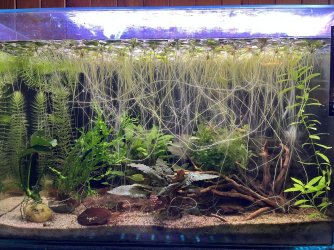Beastije
Fish Addict
Finally, after months of waiting for the fish to grow up at the sellers, they are home. For you it may be no big deal as they must be available everywhere in the US, for me, nt even glasser imports them regularly, so one local breeder doing killifish and having these? A miracle.
I have three pairs, already reached maturity. Seller did not have excess females to sell, so sadly pairs it is.
They are in my 40 liter tank, 56 cm x 25 cm x 36 cm and it has been only few days since they arrived, but they are already flashing, sparring, checking the moss.
They are everywhere, not only on top where they spend their first stressed day. I have seen two males swimming side by side, upside down and all over, to impress one female who was so not interrested
I do not have decent picture of the fish, they move too much, but overall I very much love them. Wish me luck
I have three pairs, already reached maturity. Seller did not have excess females to sell, so sadly pairs it is.
They are in my 40 liter tank, 56 cm x 25 cm x 36 cm and it has been only few days since they arrived, but they are already flashing, sparring, checking the moss.
They are everywhere, not only on top where they spend their first stressed day. I have seen two males swimming side by side, upside down and all over, to impress one female who was so not interrested
I do not have decent picture of the fish, they move too much, but overall I very much love them. Wish me luck

